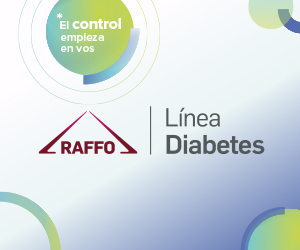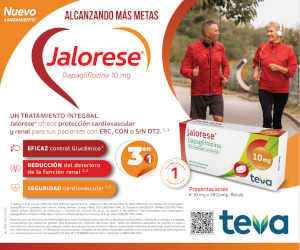Type 1 diabetes mellitus: age of onset and presence in first-degree relatives
DOI:
https://doi.org/10.47196/diab.v54i1.175Keywords:
type 1 diabetes mellitus, age of onset, first-degree relativesAbstract
Introduction: type 1 diabetes mellitus (DM1) is a childhood and adolescence disease, but it can occur at any age. The risk of developing DM1 is 8-15 times higher in first-degree relatives of patients with DM1. The proportion of affected first-degree relatives in children under 15 with DM1 is ≈12%. This frequency may increase to more than 20% after years of follow-up
Materials and methods: a diagnosis of DM1 was defined in 414 subjects by phenotype, clinical judgment and early insulin requirement within the year of diagnosis. Age at diagnosis was determined and subjects were divided into those with debut before or after 30. The following variables were recorded and compared: presence of DM1 in first-degree relatives, body mass index (BMI), waist circumference, HbA1c and association with hypothyroidism. t test and ANOVA for two or multiple subgroups comparison and chi square test with Fisher correction for quantitative or categorical variables were used.
Results: the frequency of diabetes debut before the age of 10 was 28.2%, between 10 and 20 years 36.9%, between 20 and 30 years 18.8% and above 30 years 17.1%. The frequency of hypothyroidism and first-degree relatives with DM1 was similar in those diagnosed before or after 30 years. The presence of DM1 in first-degree relatives was found in 17.2% of the patients (father 3.6%, mother 3.1%, sibling 10.2%, son 0.5%).
Conclusions: in 82.9% of patients debut was before the age of 30, but it was later in 17.1%. 17.2% of patients had first-degree relatives with DM1. We found the highest frequency of DM1 association among siblings (10.2%) similar to studies in adult DM1 populations but contrary to studies in children and adolescents. This family pattern was similar between DM1 beginning before or after 30 years.
References
I. Sabbah E, Savola K, Ebeling T, et al. Genetic, autoimmune, and clinical characteristics of childhood and adultonset type 1 diabetes. Diabetes Care 2000; 23: 1326-32.
II. Bingley PJ. Clinical applications of diabetes antibody testing. J Clin Endocrinol Metab 2010; 95: 25-33.
III. Thomas NJ, Jones SE, Weedon MN, et al. Frequency and phenotype of type 1 diabetes in the first six decades of life: a cross-sectional, genetically stratified survival analysis from UK Biobank. Lancet Diabetes Endocrinol 2018; 6: 122-129.
IV. Parkkola A, Härkönen T, Ryhänen S, et al. Extended family history of yype 1 diabetes and phenotype and genotype of newly diagnosed children. Diabetes Care 2013 Feb; 36: 348-54.
V. Lorenzen T, Pociot F, Nerup J, et al. Long-term risk of IDDM in first-degree relatives of patients with IDDM. Diabetologia 1994; 37:321-327.
VI. Harjutsalo V, Reunanen A, Tuomilehto J. Differential transmission of type 1 diabetes from diabetic fathers and mothers to their offspring. Diabetes 2006; 55: 1517-1524.
VII. Spanakis E, Golden SH. Race/ethnic difference in diabetes and diabetic complications. Curr Diab Rep 2013; 13: 814-823.
VIII. Wagener DK, Sacks J, LaPorte R, et al. The Pittsburg Study of insulin-dependent diabetes mellitus. Risk for diabetes among relatives of IDDM. Diabetes 1982; 31: 136-144.
IX. Sipetic S, Vlajinac H, Kocev N, et al. Family history and risk of type 1 diabetes mellitus. Acta Diabetol 2002; 39: 111-115.
Downloads
Published
How to Cite
Issue
Section
License

This work is licensed under a Creative Commons Attribution-NonCommercial-NoDerivatives 4.0 International License.
Dirección Nacional de Derecho de Autor, Exp. N° 5.333.129. Instituto Nacional de la Propiedad Industrial, Marca «Revista de la Sociedad Argentina de Diabetes - Asociación Civil» N° de concesión 2.605.405 y N° de disposición 1.404/13.
La Revista de la SAD está licenciada bajo Licencia Creative Commons Atribución – No Comercial – Sin Obra Derivada 4.0 Internacional.
Por otra parte, la Revista SAD permite que los autores mantengan los derechos de autor sin restricciones.


































